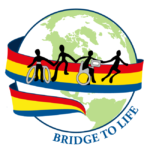Cortical Visual Impairment (CVI) is a unique type of visual impairment which often co-occurs with cerebral palsy and other neurological disorders associated with severe speech and physical impairments (SSPI) and complex communication needs (CCN). Little is understood about how to best support the specific visual needs of students with SSPI and CVI who rely on AAC for daily communication needs and participation in academics and literacy instruction. To maximize the participation of these students, The Bridge School has developed interventions, strategies and accommodations based on The CVI Range, an assessment tool which provides rich descriptive information about a student’s visual abilities and characteristics.
This presentation provides practitioners and educators with strategies to support systematic implementation of accommodations developed to recruit and increase use of a student’s vision for communication, academic instruction, assessment, and accessing the environment. These interventions are embedded within classroom activities and based upon student considerations, teaching considerations, environmental considerations, and individual AAC and AT tools and strategies. These accommodations lead to changing expectations for students using their vision during instruction, all ultimately support vocabulary and language acquisition, increase effective use of all AAC modalities, and support the development of literacy skills. We will discuss preliminary outcomes and progress in these areas for our students with CVI.


